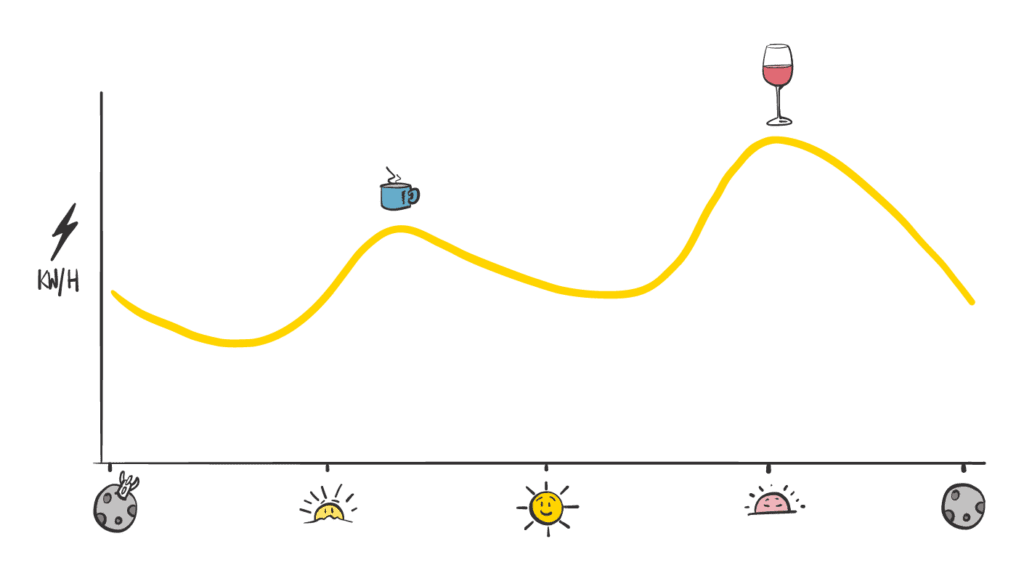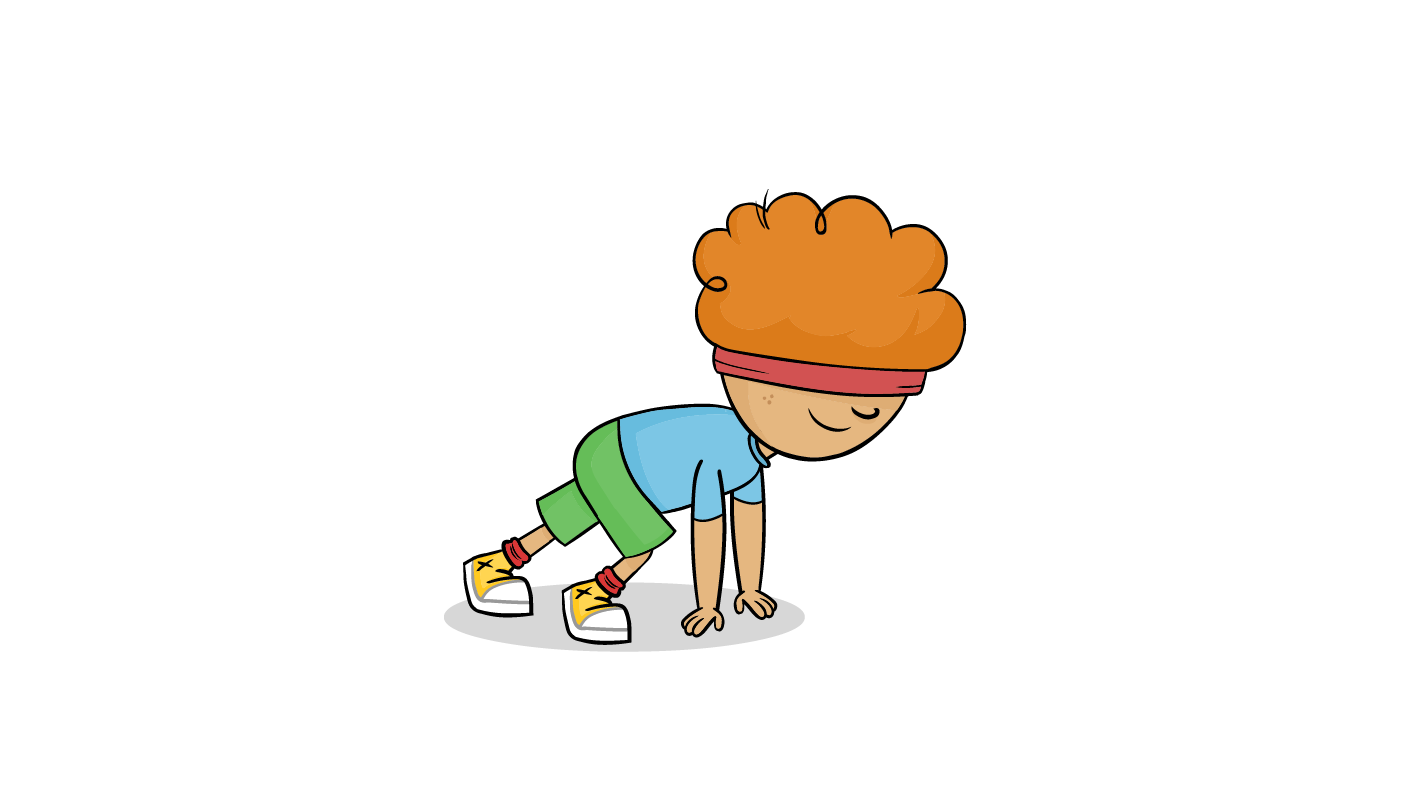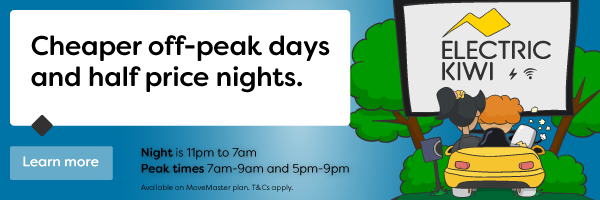With a time-of-use (TOU) plan, the cost of your electricity varies based on the time of day. You have a rate for peak usage and a rate for off-peak usage, which gives you more control over your energy bills. The more power you move off-peak, the more you can save!
We have introduced time-of-use pricing across all of our plans. To understand why, it helps to understand the basics of power generation.

In New Zealand, energy is sold in half-hour chunks. The market figures out how much power is needed, and then generators toss in their bids. It starts with eco-friendly cheaper generation like solar, hydro and wind.
The more power we need, the less likely the green sources can meet all of the demand. So expensive heavy weights like coal, gas, and diesel are bid in at much more expensive prices.
And here’s the interesting bit, the last bid sets the price for ALL the energy types in that half-hour slot. Whether it’s wind, water or coal, the prices for all power during a high-demand period are sold at a premium. Whereas the power sold during off-peak times is often much cheaper (and greener!) because the expensive, non-renewable generation sources aren’t as likely to be needed.
So by moving your power off-peak, you are more likely to be using renewable generation, and on a time-of-use plan, that power will cost you less!
What’s load shifting and how can I save money?
Load shifting simply means moving your electricity use to off-peak hours and it can lead to significant savings on a time-of-use plan. The amount of change you see on your bill will depend on how much you use your Hour of Power and cheaper off-peak times.
Peak Hours (7am – 9am and 5pm – 9pm) are the times when most people are using electricity – typically in the evening when everyone’s cooking, watching TV, or running appliances. Because of the high demand during these hours, the cost of energy is higher.
Off-Peak Hours (the rest of the time, and all weekend) are the quieter hours, like late at night, early in the morning before 7am when most people are sleeping or during the day. This includes the time after the rush hours too, when most people are already at work or in school. During off-peak hours, electricity demand is lower and it tends to be more affordable.

Here’s where load shifting comes in – once you get started, you will be surprised how easy it is. Simple things include running the dishwasher, dryer or washing machine off-peak. To start planning, you can check out a list of common appliances here and how much power they’re likely to use, and we’ve created a handy guide with tips that will help you become a load shifting superhero.
Electric Kiwi’s switch to time-of-use plans is a practical step for both our customers and the environment. The reality of New Zealand’s electricity market highlights the importance of finding innovative solutions, and as we transition to more renewable energy generation, load shifting will become even more vital. Renewables are cheaper and better for our planet, but they do not always run when we want them to. The sun shines during the day, and wind generation depends on weather conditions.
In the future real time shifting of load to match intermittent renewables will help us balance demand with supply in real time. This can be done via sophisticated industrial control, automation of EV charging, control of our hot water and more. The future is exciting, and we’re getting started now because reducing peak electricity use has the power to reduce electricity costs and help our planet. You can keep up to date with everything Electric Kiwi is doing in this space here.
We are all part of the solution, and you can help by saving as much money as possible by moving more power off-peak!

















